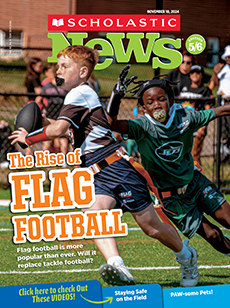Clink! With one last tap of a silver hammer, a spike made of gold was set in place on the railroad track. The crowd that had gathered at Promontory Summit in what is now the state of Utah let out a cheer.
They were celebrating an important moment in U.S. history. The date was May 10, 1869. After six years of hard work, the country’s first transcontinental railroad was finished. A new age of transportation had begun.
For the first time, people could travel by train from New York to California. A trip that once took several months in a horse-drawn wagon could now take about a week. Trading and transporting goods also became easier. The railroad connected Americans like never before.
What happened to that famous golden spike? It was removed from the track after the ceremony. It ended up hundreds of miles away, in California. Earlier this year, a class of fourth-graders started a campaign to bring it back to Utah.

